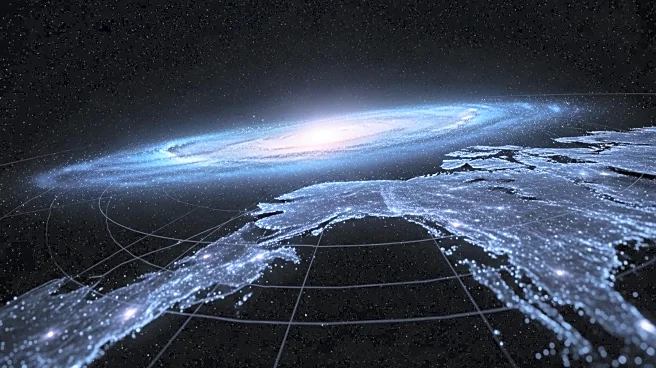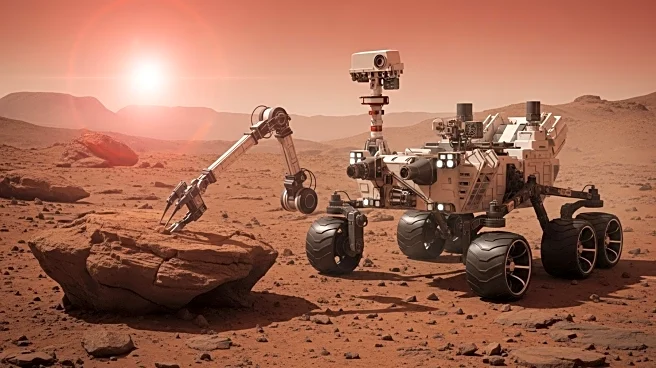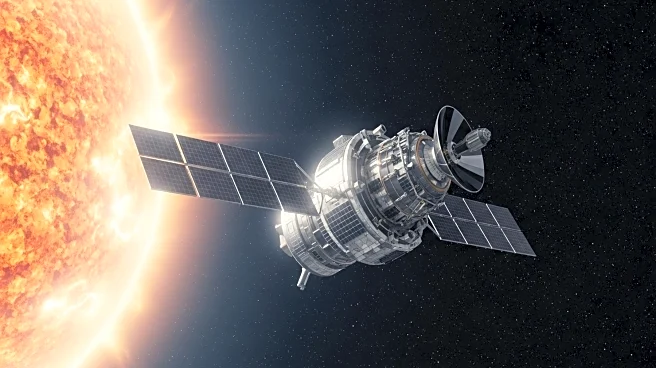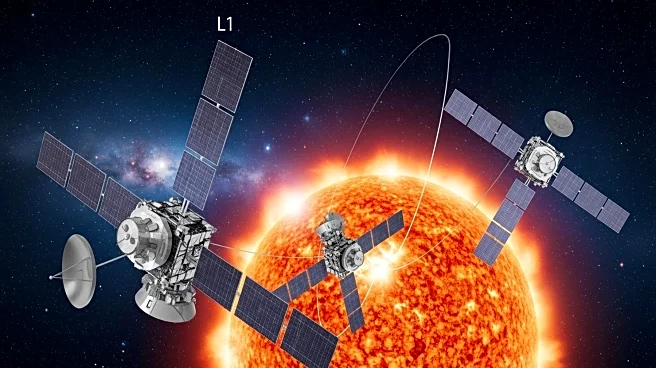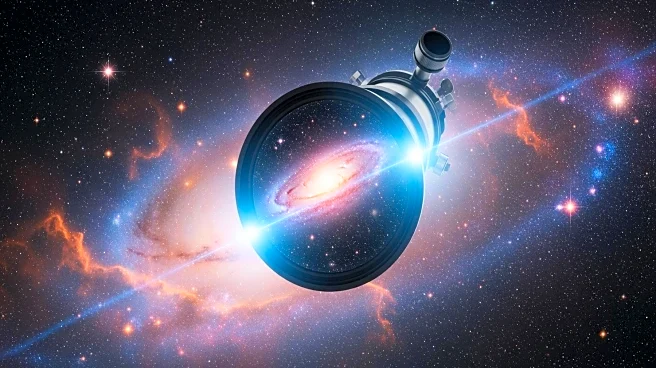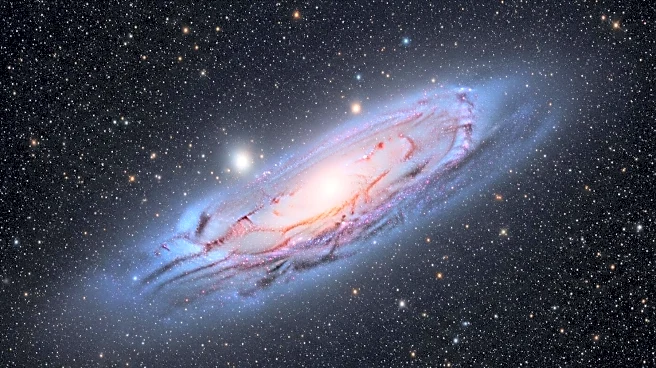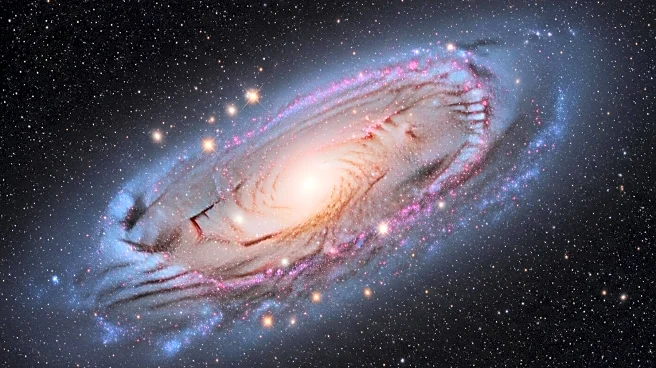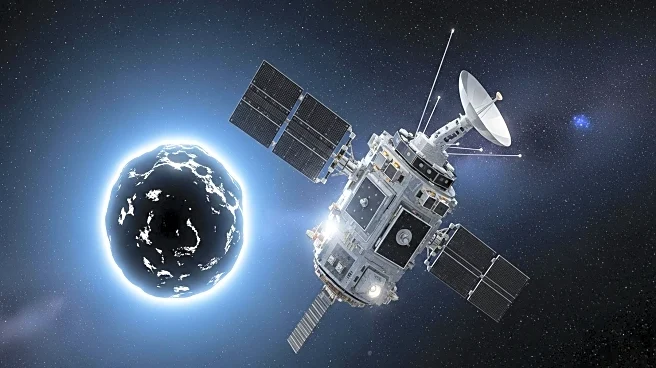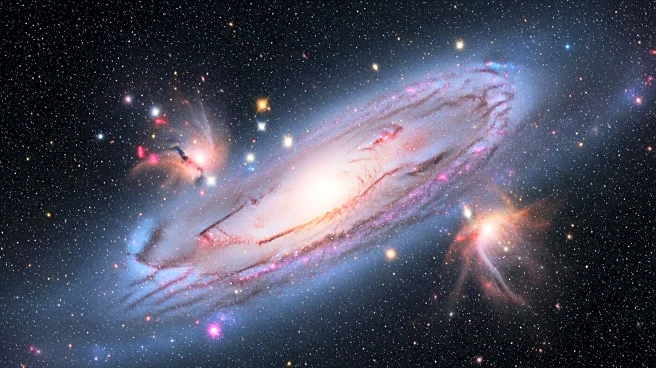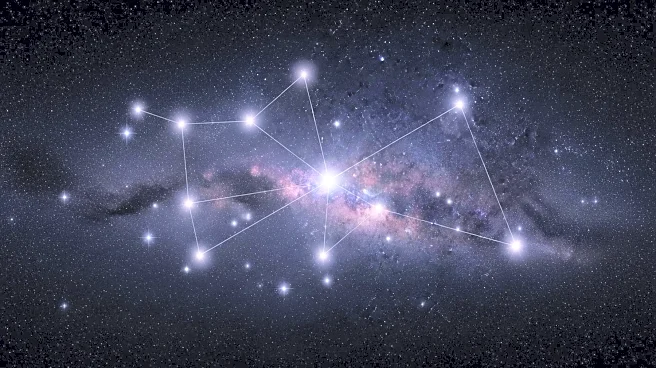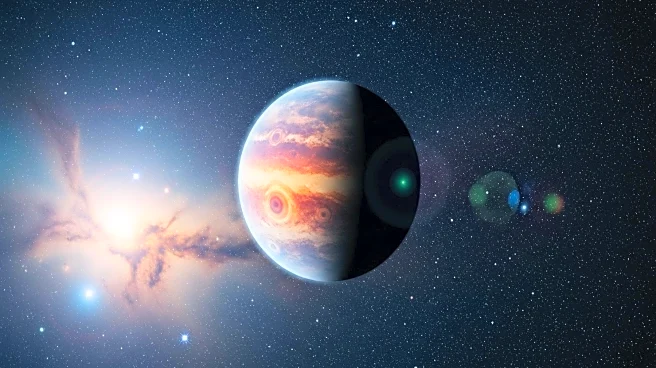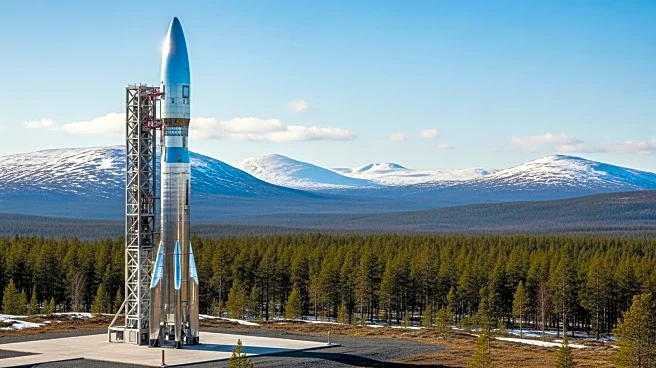What is the story about?
What's Happening?
The European Space Agency's Gaia mission has released a new 3D map of the Milky Way's local arm, providing an unprecedented view of the galaxy's structure. This map, based on data from Gaia's extensive survey of over two billion celestial objects, allows scientists to visualize the distribution of stars and molecular clouds within 4,000 light-years of the Sun. The map includes the positions of 87 rare O-type stars, which are indicators of star formation, and highlights regions like the Orion Nebula and the Gum Nebula. This achievement marks a significant advancement in understanding the Milky Way's composition and the processes of star formation.
Why It's Important?
The new 3D map is a crucial tool for astronomers studying the Milky Way's structure and star formation processes. By providing a detailed view of the galaxy's local arm, the map helps scientists understand how massive stars influence their surroundings and the lifecycle of interstellar matter. This data is essential for refining models of the Milky Way's spiral arms and understanding the dynamics of star formation. The map's accuracy also boosts confidence in the visualizations of the galaxy's structure, offering a realistic glimpse of what the Milky Way looks like from an external perspective.
What's Next?
Future data releases from the Gaia mission, expected in 2026 and 2030, will expand the 3D map further into the galaxy, providing even more precise measurements. These releases will enhance the understanding of the Milky Way's composition, star orbits, and history. The ongoing analysis of Gaia's data will continue to reveal new insights into the galaxy's structure and the processes driving star formation.
Beyond the Headlines
The Gaia mission's success in mapping the Milky Way highlights the synergy between astronomical observations and advanced data processing techniques. The mission's data-driven approach to cosmic cartography is setting new standards for understanding the galaxy's structure and dynamics. This achievement also underscores the importance of international collaboration in space exploration and the potential for future missions to build on Gaia's legacy.
AI Generated Content
Do you find this article useful?
